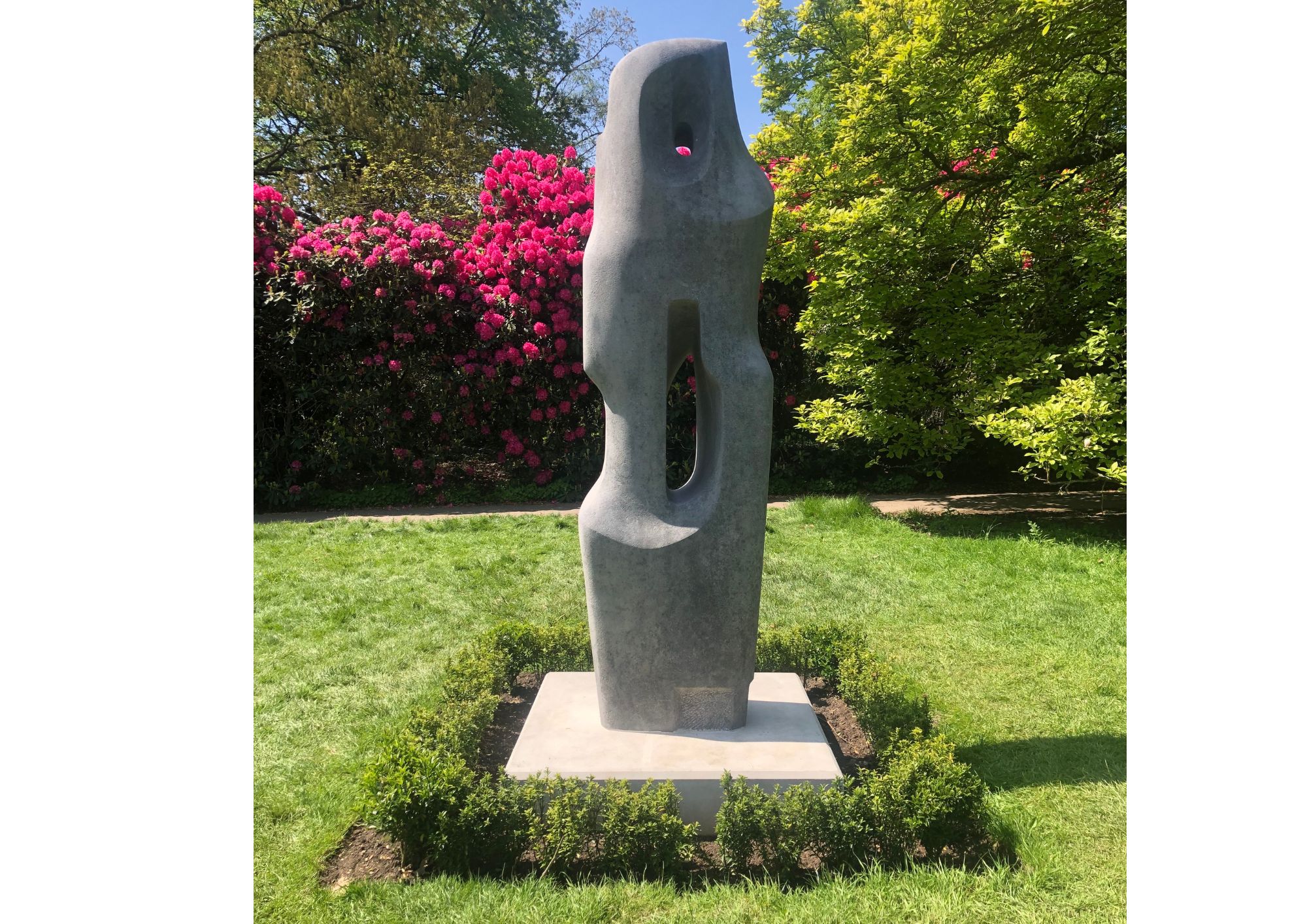Fixed: Hepworth's learning sculpture of Hampstead Heath
Priceless installation on grounds of Kenwood was dedicated to RAF pilot
Friday, 26th May 2023 — By Dan Carrier

Barbara Hepworth’s sculpture dedicated to her RAF pilot son
IT was the “leaning sculpture of Kenwood”, a piece by the celebrated artist Barbara Hepworth which had begun suffering from subsidence and removed from the grounds.
But the two-ton monument to the artist’s RAF pilot son has been saved after a loving restoration project and has now been returned to its familiar location on Hampstead Heath.
It had been in danger of falling over or being further damaged by erosion, prompting managers at Kenwood to plan a delicate operation to lift the sculpture, restore damaged parts and build a suitably strong plinth.
Kenwood collection curator Louise Cooling said: “It had been monitored and maintained with a light clean each year, but over time it had suffered from subsidence and was leaning to one side. It was on a small concrete pad and when we lifted it up, there were no foundations underneath.”
She added: “It had reached the point where we needed to take action. It is the first comprehensive restoration it has had in its lifetime.”
Hepworth cast the piece in her studio in St Ives, Cornwall, and the work had a special, personal resonance.
Ms Cooling said: “It was made to commemorate the death of her son, Paul Skeaping, who was killed in Malaya while flying for the RAF. She wrote how ‘it is a monument for all those who seek freedom in the air’, and that has led scholars to believe she created the piece as she grieved.”
The sculpture, made of limestone, was not originally destined for Kenwood. It was bought by the London County Council and placed behind the Royal Festival Hall in Belvedere Road in the mid-50s. It stayed on the South Bank until 1963.
Ms Cooling added: “There was a lot of development going on around the Festival Hall, and it needed to be moved, temporarily or otherwise. The LCC ran Kenwood, so the sculpture was moved there so it could remain publicly accessible, and of course the house had a long association with the LCC art collection.”
The priceless artwork was removed last year for specialist attention.
Ms Cooling explained: “Because the sculpture was placed at ground level, in heavy rain the bottom of the sculpture would sit in pooling water, and organic material was growing on it, which was a worry. “It had also been intentionally and unintentionally vandalised – children hitting it with sticks and stones, for example.”
The British weather had also not done Hepworth’s skill many favours.
Ms Cooling said: “Limestone is obviously a natural material that erodes and weathers, and was an example of the kind of direct carving Hepworth was famous for.”
The sculpture was taken inside to ensure it was kept warm and dry while a thorough survey was done of its condition. As well as giving the piece the once over, Kenwood staff designed a new plinth. It has deeper foundations, is raised above ground level and has a small square of box hedges at its foot to discourage anyone from clambering on it.
Ms Cooling added: “It is a brilliant example of Modernist sculpture by one of the most important artists of the 20th century. It brings gravitas to the landscape here and by including the new plinth, we are honouring Hepworth’s wishes for the work – she had said she wanted it to be ‘elevated in the landscape’.”
